Available PhD projects (October 2014 intake)
Please find below a list of available PhD projects to commence in October 2014. The application deadline is January 24th, 2014, and the projects are offered within the newly established doctoral training partnership (DTP) at Oxford, a rather exciting opportunity for students and faculty alike. All six projects listed here fall under the DTP stream "Dynamic Earth, Surface Processes and Natural Hazards":
- Seismic waveform tomography on a global scale
- Scattering approaches to global wave propagation and Earth model
validation
- Imaging a mantle plume under the hotspot of La Reunion
- Seismological investigations of the Earth's core-mantle boundary
region
- Uncertainty analysis in seismic tomography
- Seismic source studies with global wavefields
If any of these projects spark your interest, please do
get in touch with the respective supervisors, Tarje Nissen-Meyer
and/or Karin Sigloch. If
you are likewise interested in different areas of seismology,
please consult our research pages
and contact us in any case - a basic idea behind the DTP is to offer
considerable flexibility in developing research projects jointly
with the student, according to mutual interests and abilities even
within the first few months after arrival.
Seismological PhD projects will also be available within the new Centre
for Doctoral Training (CDT) in Oil and Gas. Please email us if you wish to know more about such exploration-scale projects. Note that an
application to this CDT program needs to be filed separately from the DTP.
Seismic waveform tomography on a global scaleGlobal tomography pulls together large and rapidly growing volumes of seismological data from international data centres in order to compute 3-D maps of heterogeneities in the earth’s interior, from crust to core. Technically, this amounts to numerically solving a very large geophysical inverse problem on high-performance computers. The scientific objectives are to better understand the geodynamics of the convecting mantle, and to help reconstruct the past distributions of continents and oceans, up to a few hundred million years back in time. We use novel physical approximations to seismic wave propagation to efficiently extract a maximum of information from modern broadband seismograms, up to the highest relevant frequencies, which yield the highest possible spatial resolution for tomographic imaging. Our primary goal is thus summed up as “Sharper images deeper down, and thus further back into the geological past”.
Required skills: Solid knowledge in computer programming for
scientific data analysis; strong motivation to use and develop
advanced numerical methods and computational tools in
seismology.
|
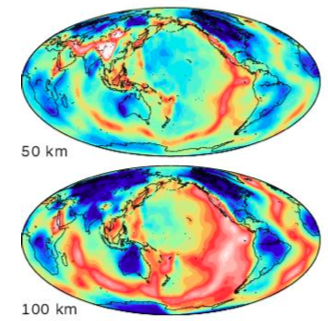
Supervisors (Oxford): Karin Sigloch, Tarje Nissen-Meyer Contact: karin.sigloch@earth.ox.ac.uk ; Phone: +44 1865 272027 |
Scattering approaches to global wave propagationSeismic wave propagation is well understood, but remains computationally challenging. Considering the amount of simulations necessary for solving tomographic waveform inversion problems (tens of thousands), it is desirable to harness efficient approximations in modelling the wavefield or some of its attributes. First-order scattering approaches based on Born or Rytov theory represent a solid basis at least for body waves. We propose to conduct a comprehensive study to fully implement such scattering into our newly released global wave propagation code for spherically symmetric models AxiSEM, and to apply it to investigating the validity bounds of these approaches. We will run a large number of simulations through existent and likely tomographic models, and compare their data fit, which will yield uncertainty estimates of the high-dimensional model parameter space. Time permitting, this may be extended in the context of probabilistic modelling and inversion of waveforms for source properties or bulk earth structure.
Required skills: Solid knowledge in computer programming for
scientific data analysis; strong motivation to use and develop
advanced numerical methods and computational tools in
seismology, strong background in fundamental mathematics
(e.g. partial differential equations, integral equations) and
physics (mechanics, electromagnetism/optics).
|
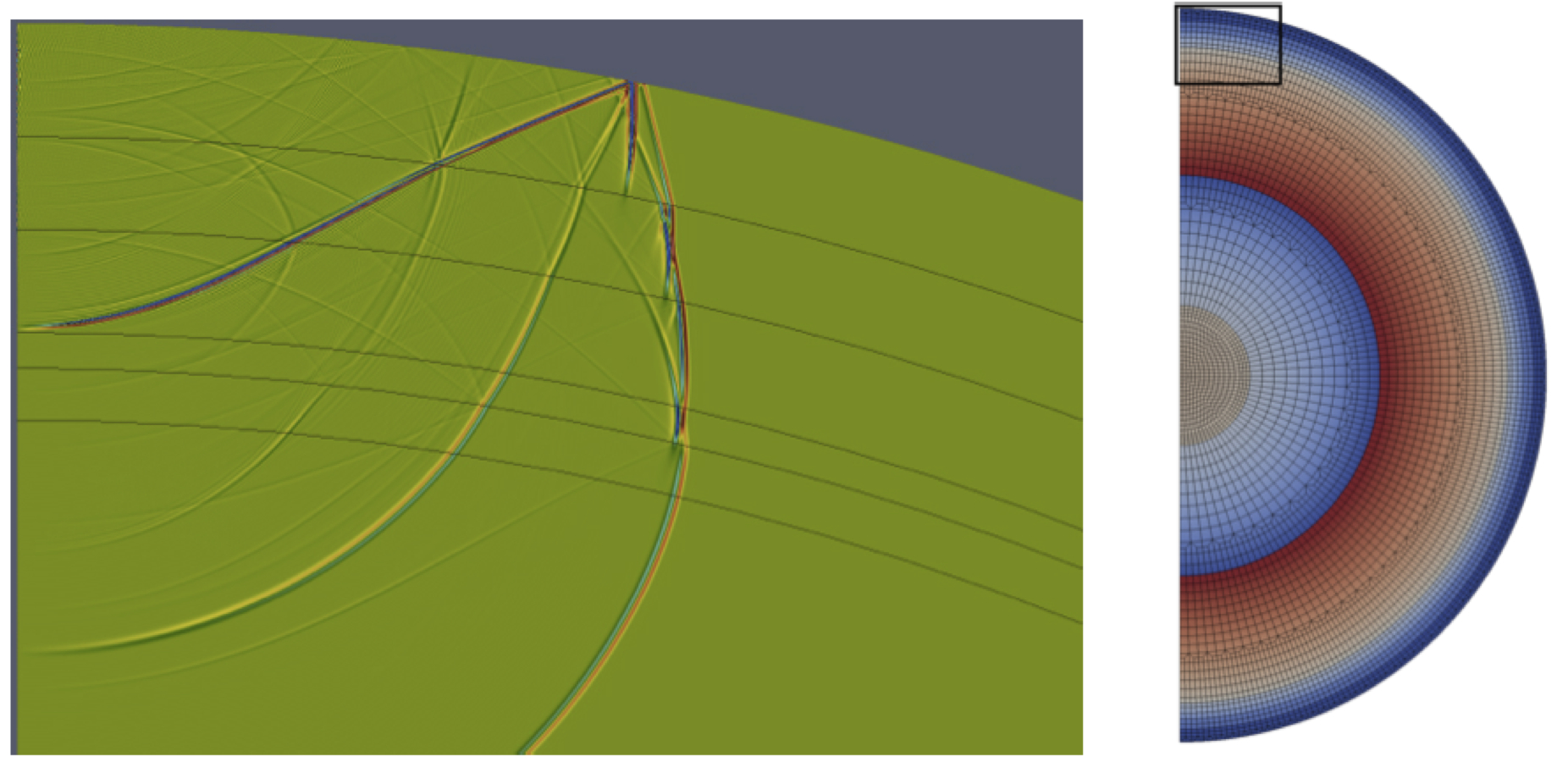
Supervisors (Oxford): Tarje Nissen-Meyer, Karin Sigloch Contact: tarjen@earth.ox.ac.uk ; Phone: +44 1865 282149 |
Imaging a mantle plume under the hotspot of La ReunionForty years after the existence of mantle plumes was first hypothesised, it remains controversial whether such upwellings from the deepest part of the earth’s mantle exist, and whether they contribute substantially to the heat budget of the solid earth. From 2011 to 2013, we acquired a very large seismological data set around the volcanic hotspot island of La Réunion, western Indian Ocean, in an international collaborative project named RHUM-RUM. The overarching objective is to study whether this intraplate hotspot is underlain by a deep, “classical” plume, or what else might have been driving its intense volcanic activity over the past 65 million years. At Oxford, we will apply the most cutting-edge methods of seismic body-wave tomography to this mixed terrestrial / ocean-bottom data set, with the goal of seismically illuminating the entire column of mantle beneath La Réunion and to obtain 3-D images of its structure from crust to core. You will interact with other project participants, mostly in France and Germany, who will be applying complementary methods of analysis to these novel data. For more information, visit the project website.
Required skills: Basic knowledge in computer programming for scientific data analysis.
|
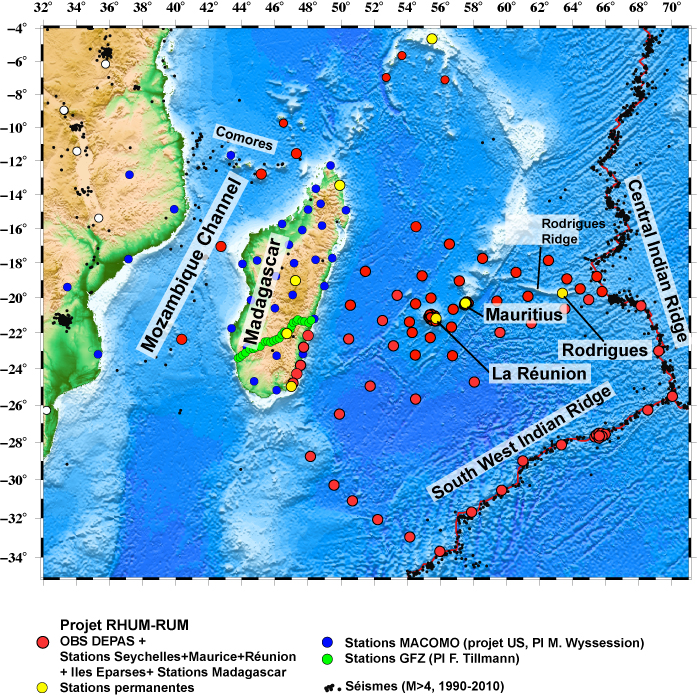
Supervisors (Oxford): Karin Sigloch, Tarje Nissen-Meyer Contact: karin.sigloch@earth.ox.ac.uk ; Phone: +44 1865 272027 |
Seismological investigations of the Earth's core-mantle boundary regionThe deepest part of the earth’s interior is essential to understanding global earth dynamics and evolution, as well as the magnetic field. Imaging of the earth’s deep interior relies primarily on seismic waves. Various modelling approaches, datasets, and target regions have produced a diverse picture of processes at scales ranging from ten to thousands of kilometres. The challenge is to tie together diverse findings across these scales, and to connect seismological observations to geodynamics and mineral physics. This ambitious project is aimed at combining various seismic methods and data to illuminate the lowermost mantle. This will involve lower-frequency tomography and high-frequency waveform modelling, and target structures such as ultra-low-velocity zones, large-low shear velocity provinces (“superplumes”), as well as core-mantle boundary topography. These tasks will be carried out by utilising and further developing modern numerical methods for seismic modelling and inversion, Big Data analysis, and state-of-the-art waveform processing.
Required skills: Solid knowledge in computer programming for
scientific data analysis; strong motivation to use and develop
advanced numerical methods and computational tools in
seismology. |
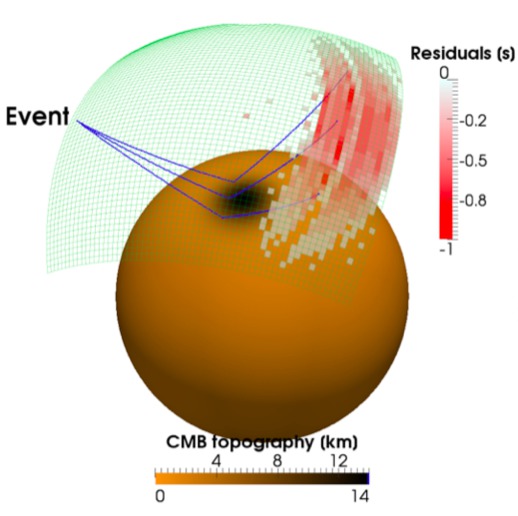
Supervisors (Oxford): Tarje Nissen-Meyer, Karin Sigloch External collaborators: Christine Thomas (Munster) Contact: tarjen@earth.ox.ac.uk ; Phone: +44 1865 282149 |
Uncertainty analysis in seismic tomographySeismic tomography, a geophysical imaging method that works large amounts of seismogram data into three-dimensional maps of the earth’s interior, is a compute-intensive application of geophysical inverse modelling. Estimating the spatial uncertainties for the 3-D images thus obtained is REALLY compute-intensive. The second big challenge is to condense the resulting, vast quantities of spatial covariance and resolution metrics into representations of uncertainty that can be intuitively grasped and evaluated by the human brain. We are looking for a numerically and statistically minded doctoral student to work in this relatively underdeveloped, but rapidly growing field. This study will be conducted in collaboration with world-leading groups in Engineering and Applied Mathematics, both specialising in probabilistic optimisation and uncertainty quantification.
Required skills: Basic knowledge in computer programming; basic knowledge of statistical methods. Strong motivation to work in the domain of scientific high-performance computing, statistics, and visualisation of high-dimensional data sets. |
Supervisors (Oxford): Karin Sigloch, Tarje Nissen-Meyer Other collaborators (Oxford): Michael Osborne (Engineering), Chris Farmer (Applied Mathematics) Contact: karin.sigloch@earth.ox.ac.uk ; Phone: +44 1865 272027 |
Seismic source studies with global wavefields
Investigating seismic source properties is important not only
for understanding their nature, but also to avoid mapping
large source uncertainties into structural
heterogeneities. Seismic sources are all those that generate
seismic waves, including ambient noise, glacial calving,
landslides, nuclear explosions. In this project, we propose to
extend conventional source imaging and determination
methodologies on three levels by full waveform modelling:
Required skills: Solid knowledge in computer programming for scientific data analysis; strong motivation to use and develop advanced numerical methods and computational tools in seismology, some knowledge about the physics of seismic sources. |
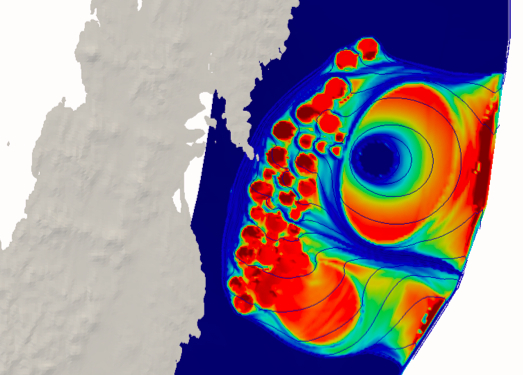
Supervisors (Oxford): Tarje Nissen-Meyer, Karin Sigloch External collaborators: Martin Mai (KAUST), Jean-Paul Ampuero (Caltech) Contact: tarjen@earth.ox.ac.uk ; Phone: +44 1865 282149 |
